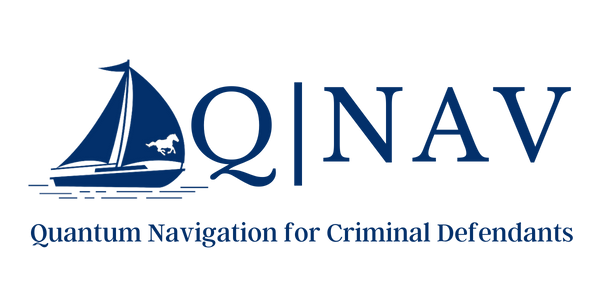When I was in prison, a program called Restorative Justice was offered. It was organized by Bridges to Life, a group out of Houston with a local chapter in Colorado.
This was about 10 years ago and it’s safe to say that the 3-month group class deeply impacted me. I think that our particular group of 12 men were all deeply impacted, albeit to differing degrees. Shortly thereafter at another prison facility, I was honored to help activate the first true one-on-one RJ experience in the visiting room on an off day with nobody else present. Four hours later, all agreed that the initial session was a huge success. The process began better than anyone could have hoped for. A beginning.
RJ is commonly known as a safe haven where victims and offenders can get together to begin the rehabilitative process; for offenders to look their victims in the eye, listen to their grief, observe firsthand how the crime has horribly and (often) irreparably damaged their lives. It’s a time for victims to dump their hearts and pain to the actual offender, while at the same time keeping the door cracked for some type of forgiveness, understanding, or maybe simply getting the junk off their chest…we’ve learned, quite a restorative event by itself.
A One-on-One Restorative Justice Experience
Victim dumps, offender listens. Victim asks questions, like, “Why?” The offender answers, “Because…” If arranged properly, the offender is prepared to soak in the victim’s pain and offer genuine sorrow and explanations of rehabilitation and often offer utter clueless truth that, “I never thought about you…I thought about me. I never understood or even cared about the gigantic effect my acts had on you…the multiplier ripple effects…I am so sorry…”
The above interaction is a one-on-one RJ exercise. Talked about a lot and achieved extremely rarely. When it works, it is platinum – heavenly, even. The offender bears his soul with truth, as hard as it might be. He cries without restrain – genuinely aware and sorrowful. The victim listens and observes – his or her radar at full tilt looking for clues about the why and about authenticity.
Often, one-on-one RJ is faith based, where a spiritual connection of sorts might be established; one where confession and forgiveness are possible.
The offender needs to practice a form of Hyde Speak. This is where one person talks uninterrupted and the other listens without any type of interruption, including forceful or telling body language. The idea is that the listener isn’t consumed with preparing a thoughtful, compelling argument or response – just simply listening, taking it all in, no matter how difficult. In the perfect world, Hyde Speak lasts for a couple of days. One person lays out his or her claims, arguments, fears, anger…everything…and takes as long as needed. The receiver simply sits and listens courteously, never engaging. Then, a day or so passes for the listener to really think about what he has heard, and then, but only then, can he respond with a full deck. This process works. I have used it for 20+ years for business, family, adversarial negotiations – you name it. It works.
Back to the perfect world. Victim dumps, offender listens. Then the tables are turned vice versa. The rules are the same. It works, but here’s the problem. Modern psychology and armchair therapists don’t get it. They let these sessions run amok. Back and forth conversations typically solve absolutely nothing except short-term feelings. But soon thereafter, more pain surfaces on both sides.
Pragmatic Realities
In the non–judicial world of executive or quasi-executive sentencing relief remedies such as clemency, special needs parole, joint motions, CIU decisions, conjoined parole matters, and the like, the victim’s power (often intertwined with the prosecution’s partnership and coaching expertise) can throw the death knell wrench into early release options, no matter how deserving. If for no other reason, the offender must often reconcile with victims; at least neutralize them and prosecutors or pretty much forget an early non–judicial prison exit. I have witnessed a handful of RJ interactions where victims actually advocate for the offender. Amazing and beautiful.
Victims Can Also Benefit
Often the worlds of offenders and victims are poles apart and neither party remotely comprehends nor understands the circumstance of the other. I have personally witnessed decades of hate, fear, and retribution roll off a victim where he or she finally hears a genuine explanation and apology. Similarly, offenders often get the shock of their lives. No longer high on drugs or fueled by hate, they too see the light and break down cathartic to say the least. While closure is an oft abused term, perhaps there is a path to resolution of sorts and a beginning of understanding and forgiveness, or at least a sense of winding up the missing pieces of your own knowledge of what happened and why.
Q|Nav has a sister firm sitting on the shelf. Restore | Rekindle [501(c)(3)(4)] is what we believe the RJ entity should look like – what it should do. Pending successful talent searches, we will launch R|R sometime in 2024, perhaps late 2023.
In the meantime, here is the takeaway from this report: Offenders (families, too) connect with your victim(s) anyway you can without breaking laws or rules about contacting them. Professionals can reach out to victims on your behalf. Keep a wide-open mind and heart, because anything is possible.
The law of karma is firmly at work here. Even if your only legitimate remedy is judicial through the courts, get right somehow with those you’ve hurt. The AA twelve-step method is as good as it gets. Think how you might apply some of these principles to RJ interactions and sustainable success. Use others to help achieve your goals;we can guide you and loved ones as to how best to orchestrate and prepare for a successful RJ experience. Why? Because without it you’re not likely going anywhere anytime soon – not sooner than normal sentencing requirements.
We are highly experienced in the early premises of one-on-one RJ. We are not experienced (or really that interested) in group or aggregate methods of concepts and procedures. Look at it this way. We need macro solutions no doubt – thirty thousand feet global fixes. No argument here. But we at Q|Nav and eventually R|R will always focus on the one-to-one relationships and leave the grand scheme to far smarter people.
One final thought for victims. I meant it when mentioned earlier that more times than not the benefits from truly crafted RJ benefits you more than the offenders.
Facilitators
Q|Nav knows how to find and guide the right people for your possible restorative justice success story regardless of where you and they are.
Please consider getting in touch with us. Our team is well-versed in making contact with victims and families, and how to address the whole matter of restorative justice for the benefit of all. Few tasks are more sensitive and emotionally charged, but there’s a real art and a right way to achieve relationships. It costs nothing to take the first steps; to determine if you are a good candidate to proceed.

